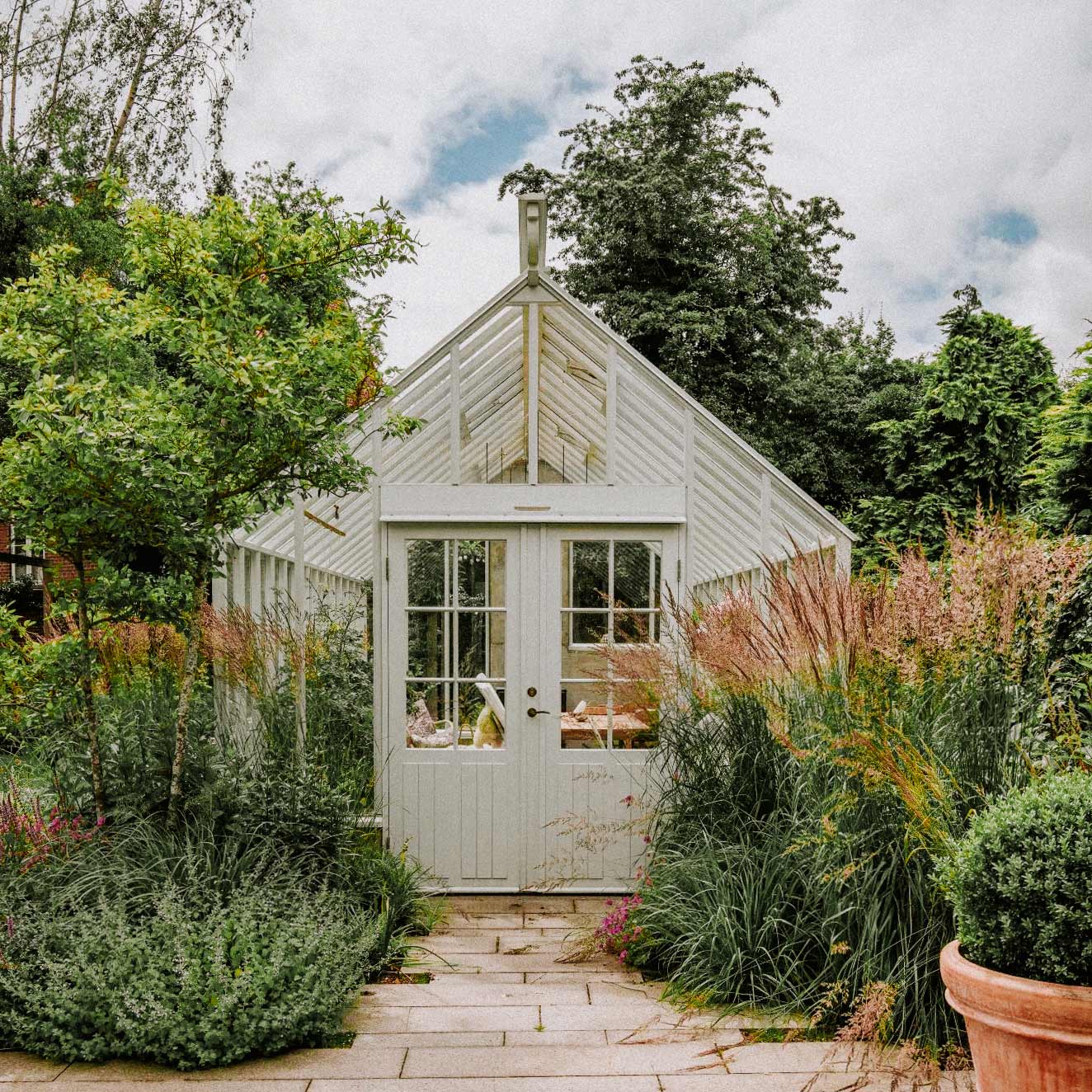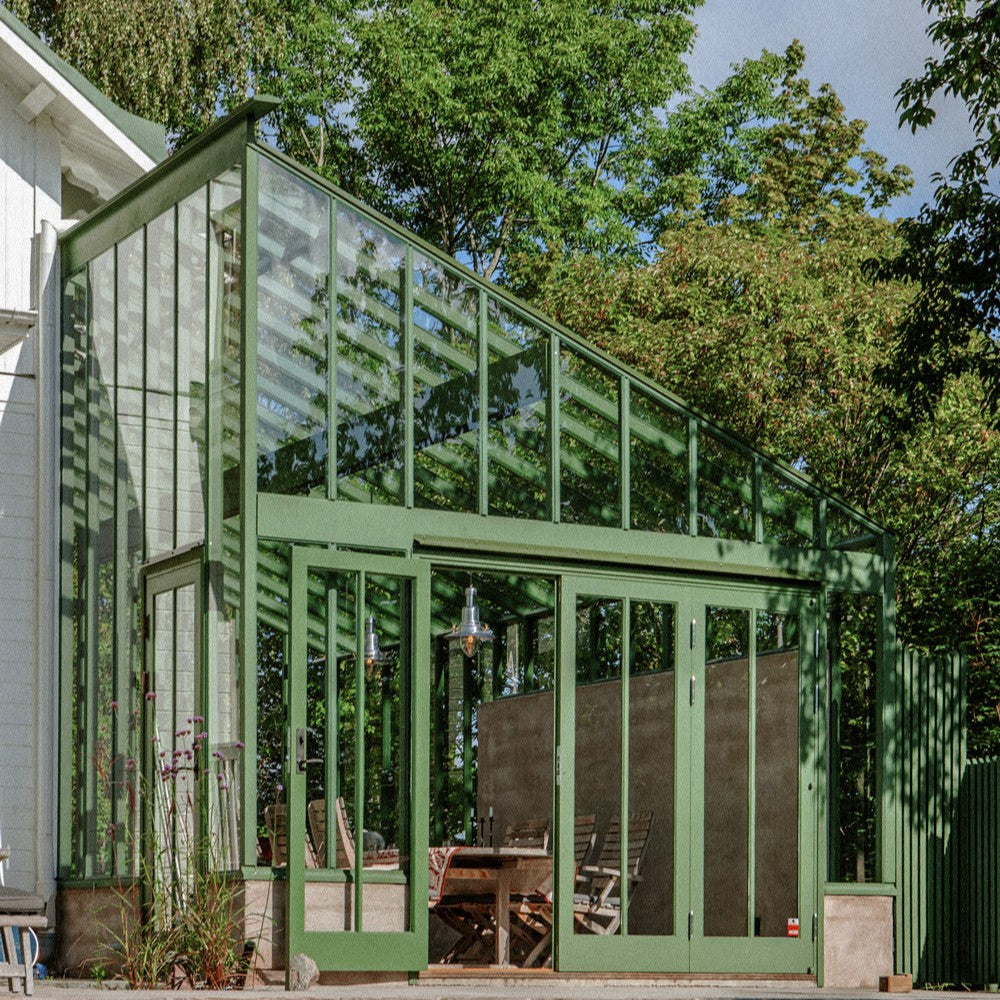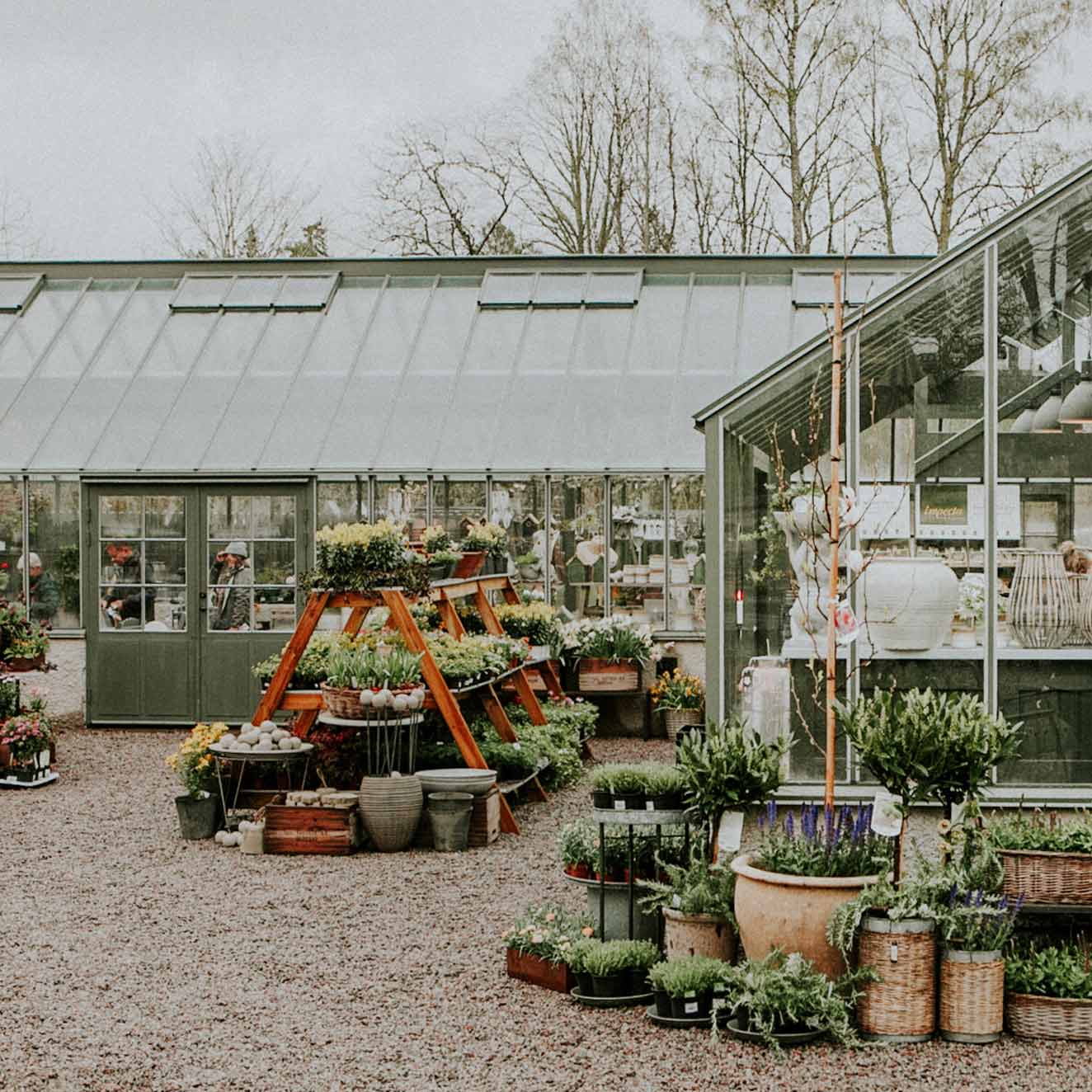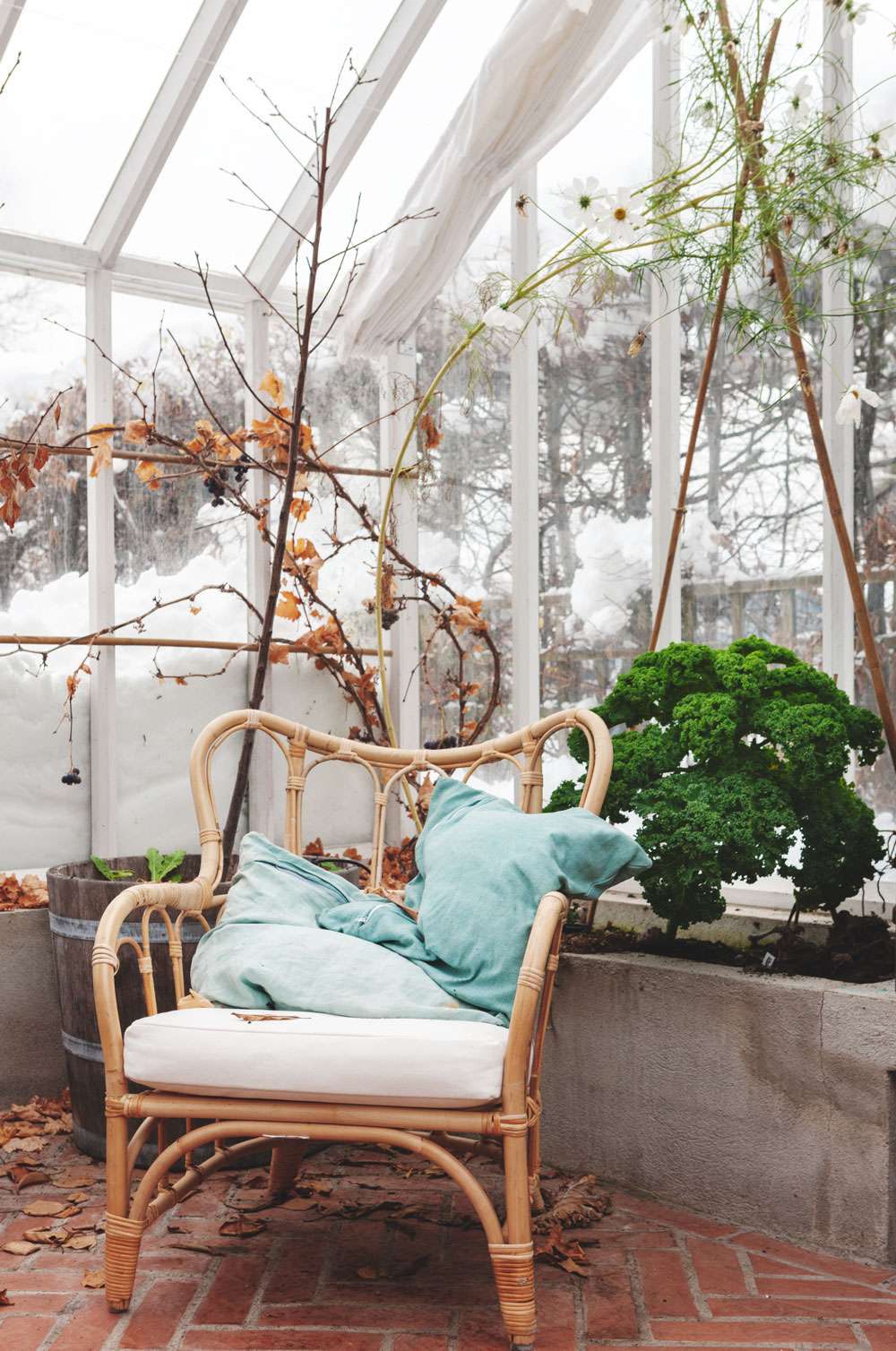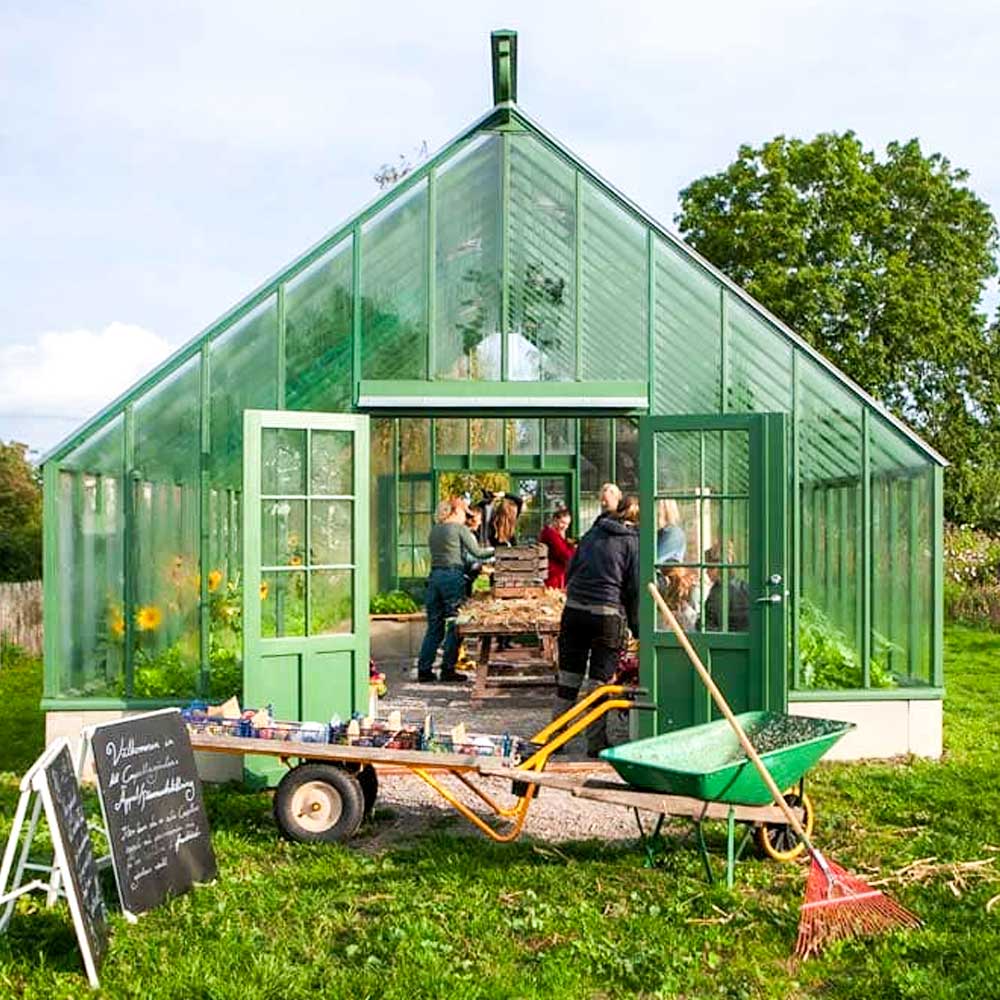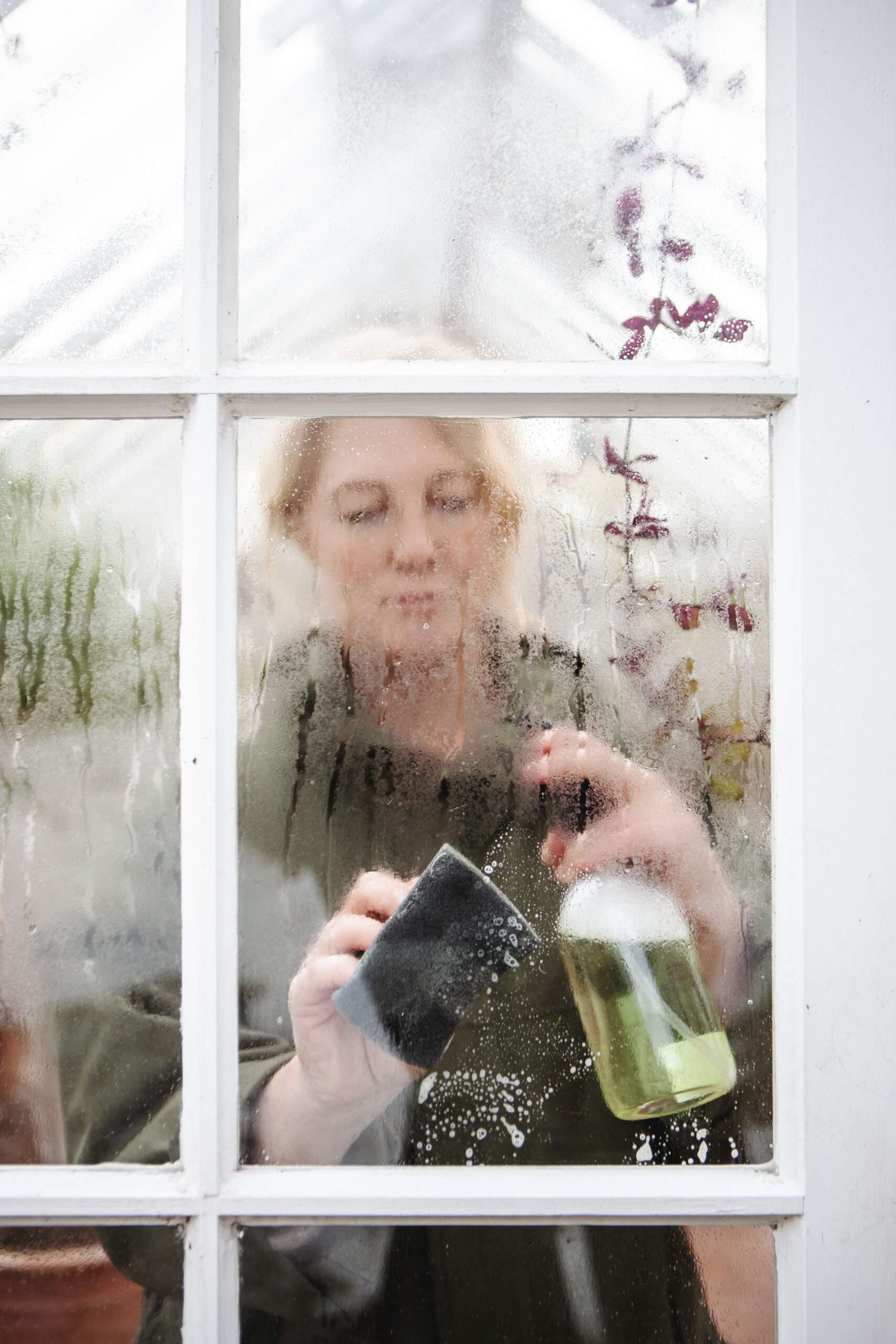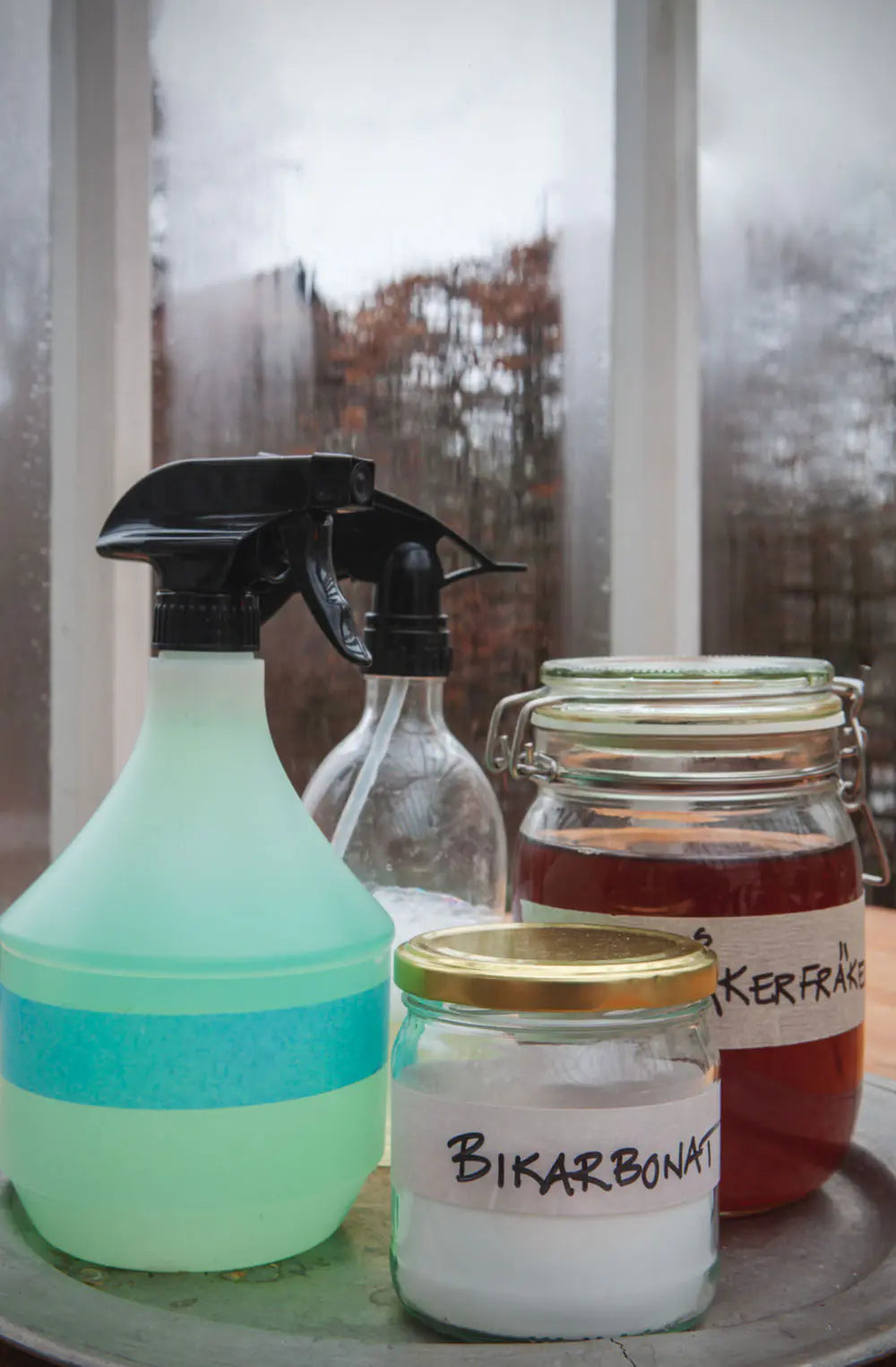
It's time to clean the greenhouse
A winter-worn greenhouse can be oh-so-beautiful. The contrast between inside and outside enhances the exotic experience of being inside during the colder time of year.
A fall cleanup will give you a head start in spring when you're about to kick off your crops.
There are many ways to go about cleaning, here we go over how we usually do it. The most important thing is to use the right cleaning product and soft tools so that the linseed oil-painted wooden surfaces are not negatively affected.
Lath dog for cleaning greenhouses
- Remove all loose material from the greenhouse. Remove wilted leaves and old plant parts.
- Protect the soil beds with plastic, or non-woven fabric if you have small plants there.
- Mix pH-neutral dishwashing detergent and hot water in a bucket. It is important that the detergent is pH-neutral so that the linseed oil paint does not break down.
- Scrub with a sponge and cloth everywhere, using a dish brush to get into all the nooks and crannies. A soft brush to attach to the water hose, intended for car washing, can be very helpful. Rinse with plenty of water.
- Use a long-handled squeegee for the glass on the ceiling. Place a cloth on the squeegee for better cleaning grip.
- Don't forget the outside of the greenhouse! If the glass is heavily soiled, go over it several times with warm water, a soft sponge and a scraper.
- Then clean everything that needs to go back into the greenhouse. Wash pots and dry tools. Sort out everything that you can store in storage so that the space becomes airy and comfortable to be in.
- Clean up the raised beds by removing wilted plants.
- Anyone who has grown in the same soil for several seasons also needs to completely or partially replace the soil to add new strength.
- Leave doors and windows open so that the moisture from the extensive cleaning can be vented out as much as possible during the day.
This about linseed oil paint and cleaning
Many cleaning agents have a high pH to dissolve dirt and grease effectively. However, this type of cleaning agent also easily "dissolves" the protective surface that the linseed oil paint provides. Therefore, it is important to use a cleaning agent that is neutral, pH7. Today, there are several to choose from in a regular grocery store. Also choose a cleaning agent that is environmentally labeled so that it does not harm aquatic organisms or otherwise contribute to the burden on the environment.
